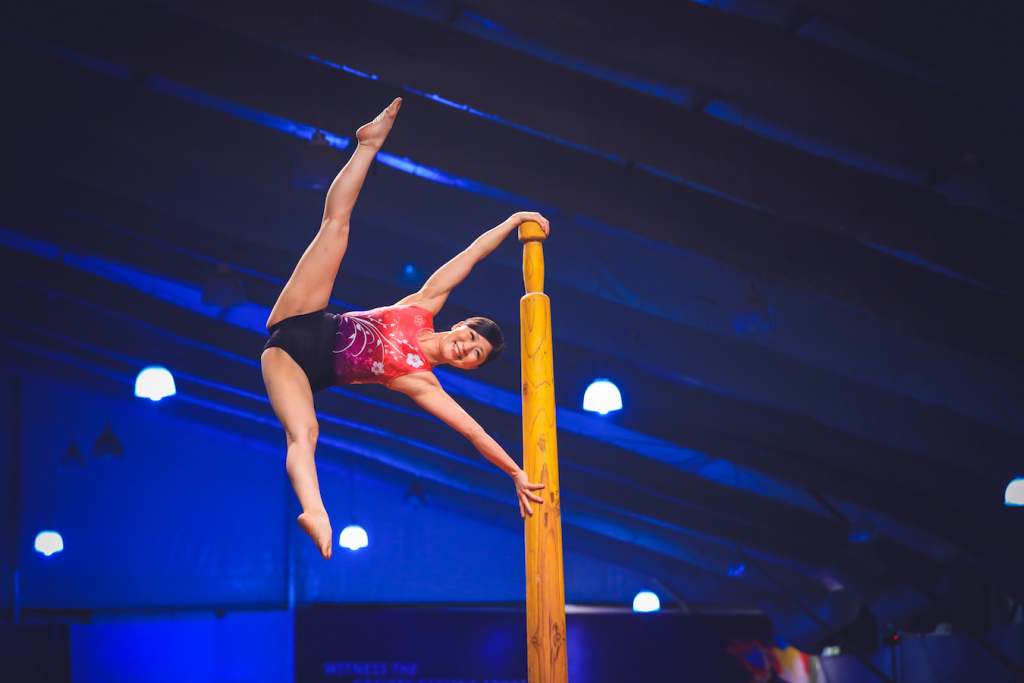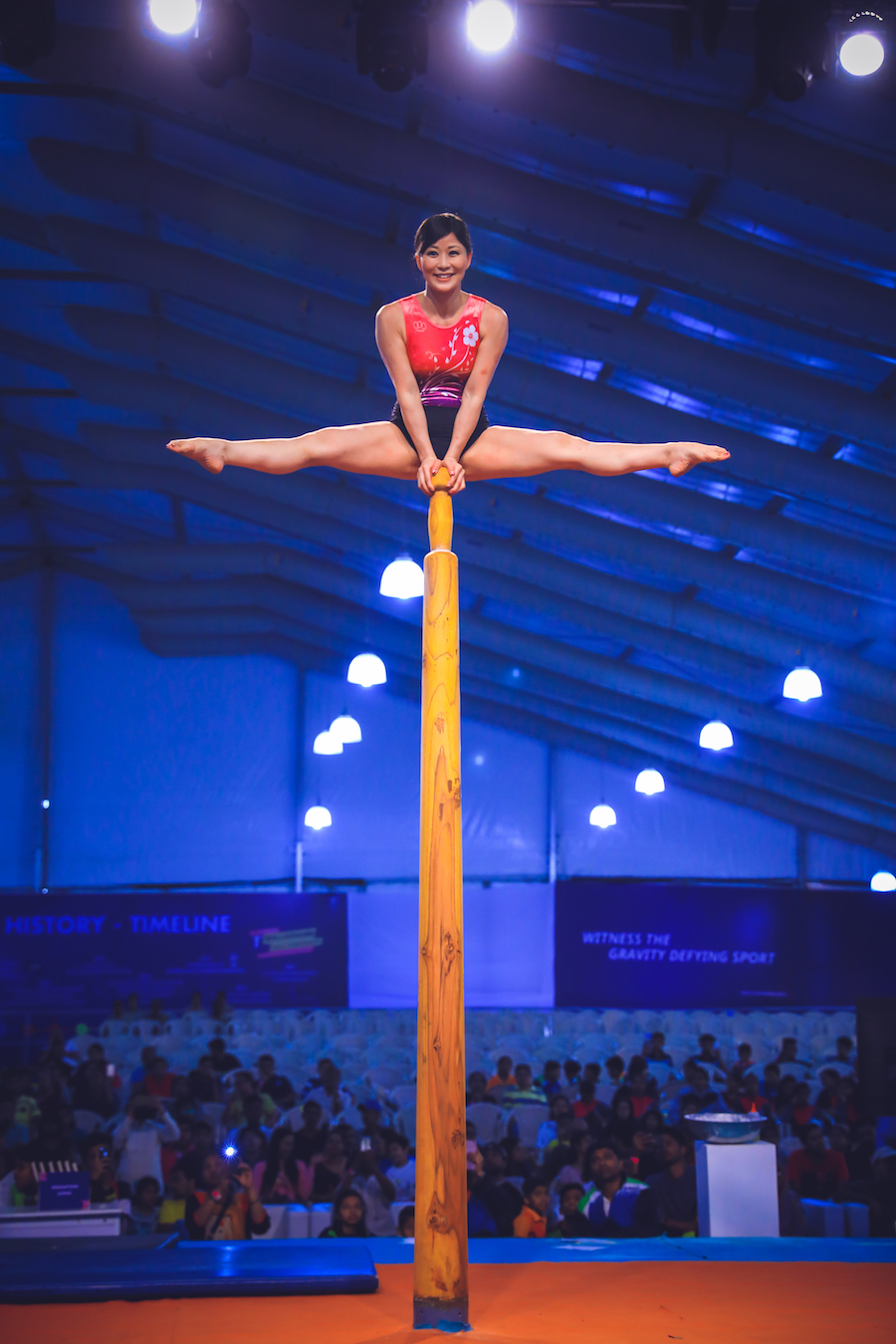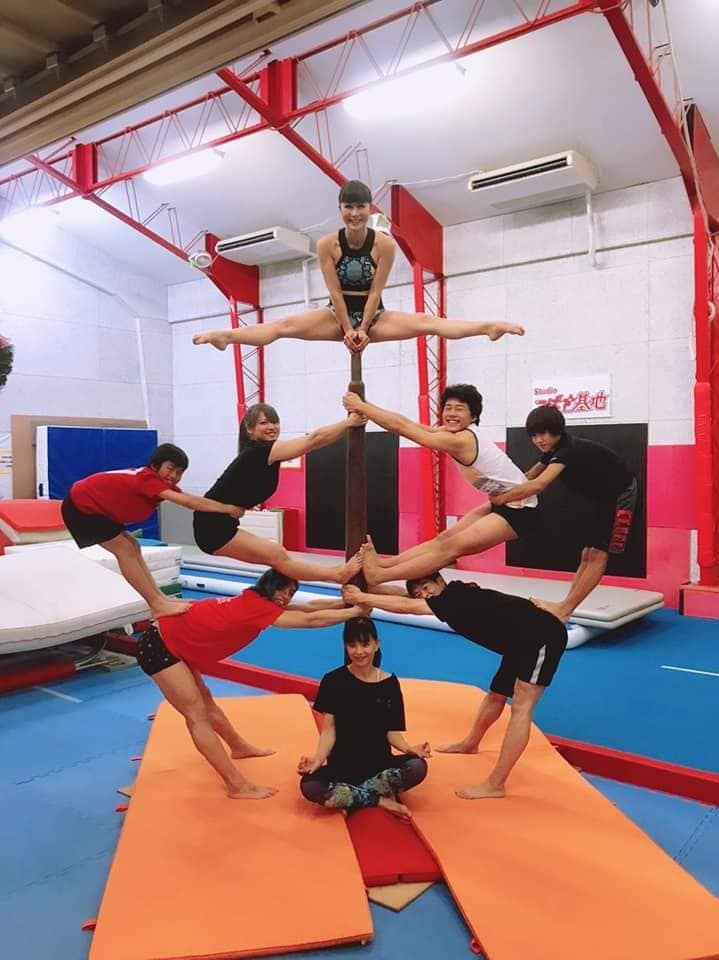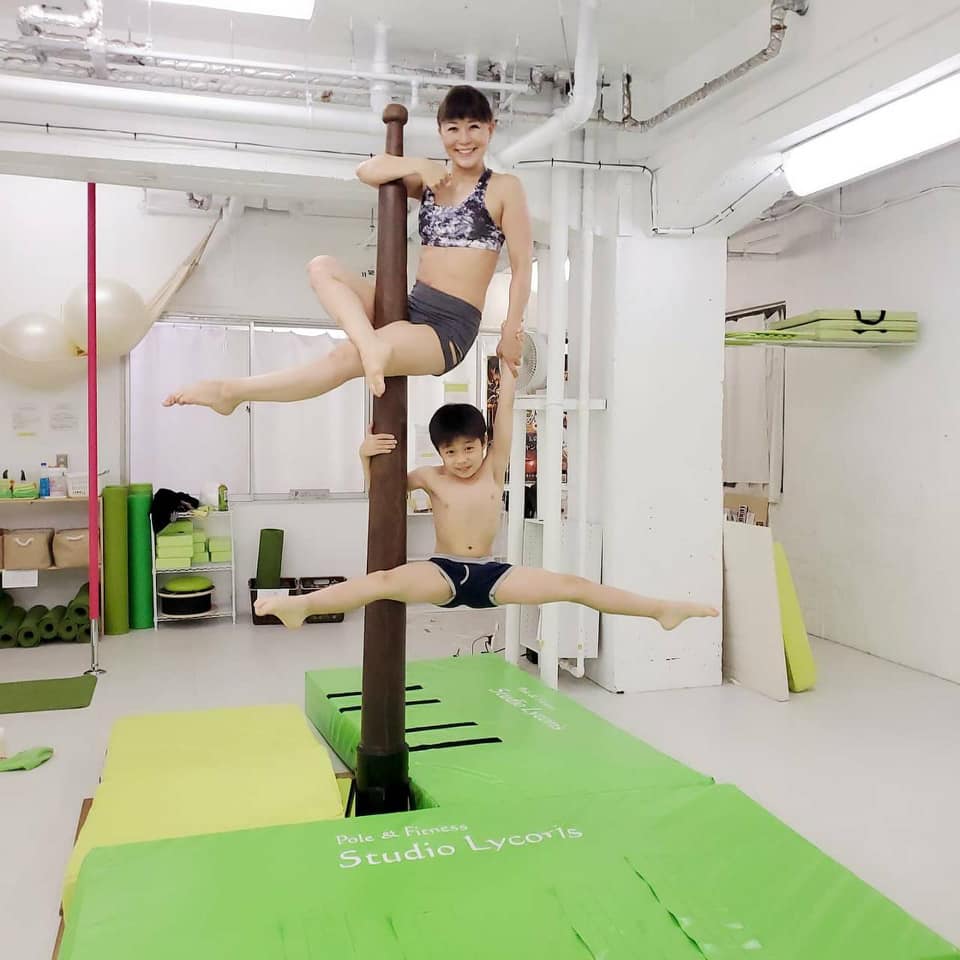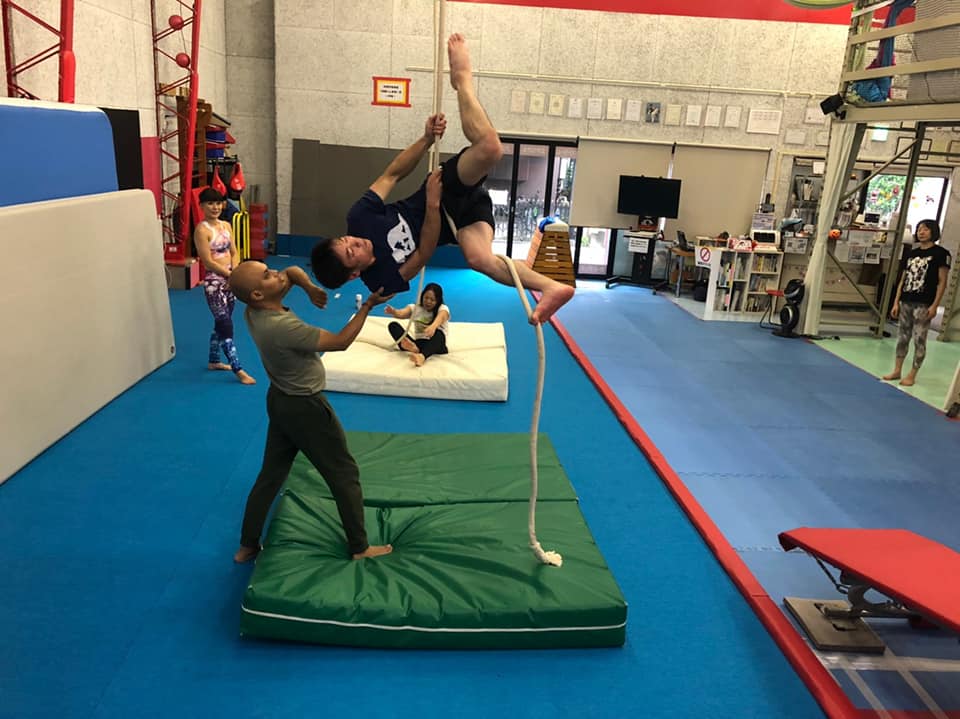Keiko Takemoto discovered the traditional Indian game of Mallakhamb on YouTube. At the time there were no classes in Japan. Determined, she pursued her interests in India, a country she traveled to six times for training.
Today, Takemoto, 41, is a reigning world champion in Mallakhamb. At the first Mallakhamb World Championship held in Mumbai in 2019, Takemoto earned three medals – two golds in women’s short and long set pole Mallakhamb, and one bronze in the all-round category.
A Way of Life
In this Olympic year, when there is uncertainty about whether the Tokyo Games will take place, a determined group is pursuing a centuries old Indian sport in the daily hustle and bustle of Tokyo. Mallakhamb is often described as aerial gymnastics or yoga, but this ancient practice is more akin to a way of life.
“[Mallakhamb] is a sport that contributes to balanced development of many things, such as body flexibility, muscular strength, stamina or velocity,” says Takemoto. “We are hoping to hold workshops at schools in Japan so that we can let people know about it, experience it, and then learn about these benefits.”
Takemoto, whose regular job involves administrative work at a university, said that her initial interest in the sport stemmed from her pursuit of stamina and muscular strength. Mallakhamb, according to her, was taught as a part of physical training to warriors, and she was so enthralled that she began a second career in it. Today, Keiko leads the Mallakhamb Federation of Japan and is preparing to compete in the next World Championships set to take place in New York City in September 2022.
What is Mallakhamb?
Mallakhamb involves performing acrobatics on a wooden pole, often made of teak and covered in castor oil, or swinging from a cotton rope covered in canvas. Players use magnesium carbonate powder on their hands for better grip. There are other forms of the sport as well, but in Japan, the rope and pole varieties are usually performed. The pole used in India is usually fixed into the ground, but in Japan, it rests on a stand for ease of transportation.
In India, the sport has been practiced by ascetics and royalty alike. A record of the practice can be traced to the Manasollasas, a 12th century encyclopaedic treatise compiled in the Chalukya kingdom, which existed in present day South and Central India.
Vivek Sable, 37, the secretary of the Mallakhamb Federation of Japan, says the federation has 12–15 people who practice both rope and pole Mallakhamb, with ages ranging from 9 years old to one member in their 60s. Sable, who has practiced the sport since he was 8 years old, represented the Japanese team as a coach and manager at the 2019 world championship in Mumbai.
Why Do People Choose Mallakhamb?
Takeru Mitazaki, 9, first learned about the sport after he saw Takemoto perform. He said he practices it when he goes for lessons and on days there is no school. “It is fun and feels like climbing on a tree, and what I like is that I got some abs,” says Mitazaki. He has been practicing Mallakhamb for two years already and wants to learn more challenging tricks and moves. The young lad aspires to perform in a tournament.
“I have preferred things that make me feel different from others,” said Mizuka Aikawa, 29, who has a desk job and has practiced Mallakhamb for two years. She says her diverse experiences span dancing, hang gliding, motor biking and road biking. Aikawa says she also learned about Mallakhamb through Takemoto. Her motivation for practicing the Indian sport is because it is “cool.” She pointed out that Mallakhamb “involves the whole body and is good as physical training for other sports.”
Kentaro Shimamura, 33, an office worker by profession, has also been a Mallakhamb regular for two years. He practices the sport each month and told us that he also enjoys physical activities like muscle training, breakdancing or acrobatics. “I love it because it trains my inner muscles or sense of balance that I had not been using enough. I am planning to keep pursuing it while enjoying it,” says Shimamura.
The Sport’s Spread Across Japan
Sable said that due to federation efforts, Mallakhamb has been demonstrated in major Japanese cities such as Tokyo, Osaka, Kobe and Kanazawa. The sport has also been showcased on national television. In the future, the federation plans to open new training centers in Japan and promote Mallakhamb among school children as well as in colleges and universities.
The benefits of doing so according to Sable are numerous. He said that while at a gym multiple machines are needed to train various parts of the body, with Mallakhamb, a single piece of equipment works on every muscle.
“It is this consummate grace, this agility, dexterity and suppleness of body, combined with quick reflexes, muscle coordination and sense of timing, that single out this game as special,” says Sable.
However, there are challenges like the language barrier and the lack of local coaches and volunteers, coupled with the high costs of studio rentals that are coming in the way of the sport’s proliferation in Japan, according to Sable, but the response of Japanese audiences has been “fantastic.”
“I am sure, Mallakhamb would become a popular spectator sport in Japan,” said Sable, adding, “There are a good number of local Japanese connecting to [the] game.”
As Tokyo gears up for the Olympics, the MFJ along with Vishwa (World) Mallakhamb Federation, Mallakhamb Federation of USA, and Mallakhamb Federation of India have jointly proposed to the International Olympic Council that a demonstration of the sport be presented at the 2020 Games, as per Sable. It is possible this would give Mallakhamb a boost in Japan and around the world.
This world celebrates Mallakhamb Day on June 15 each year. If the ancient Indian sport has piqued your interest, you too can learn more about participating by contacting the Federation in Japan through its website.

